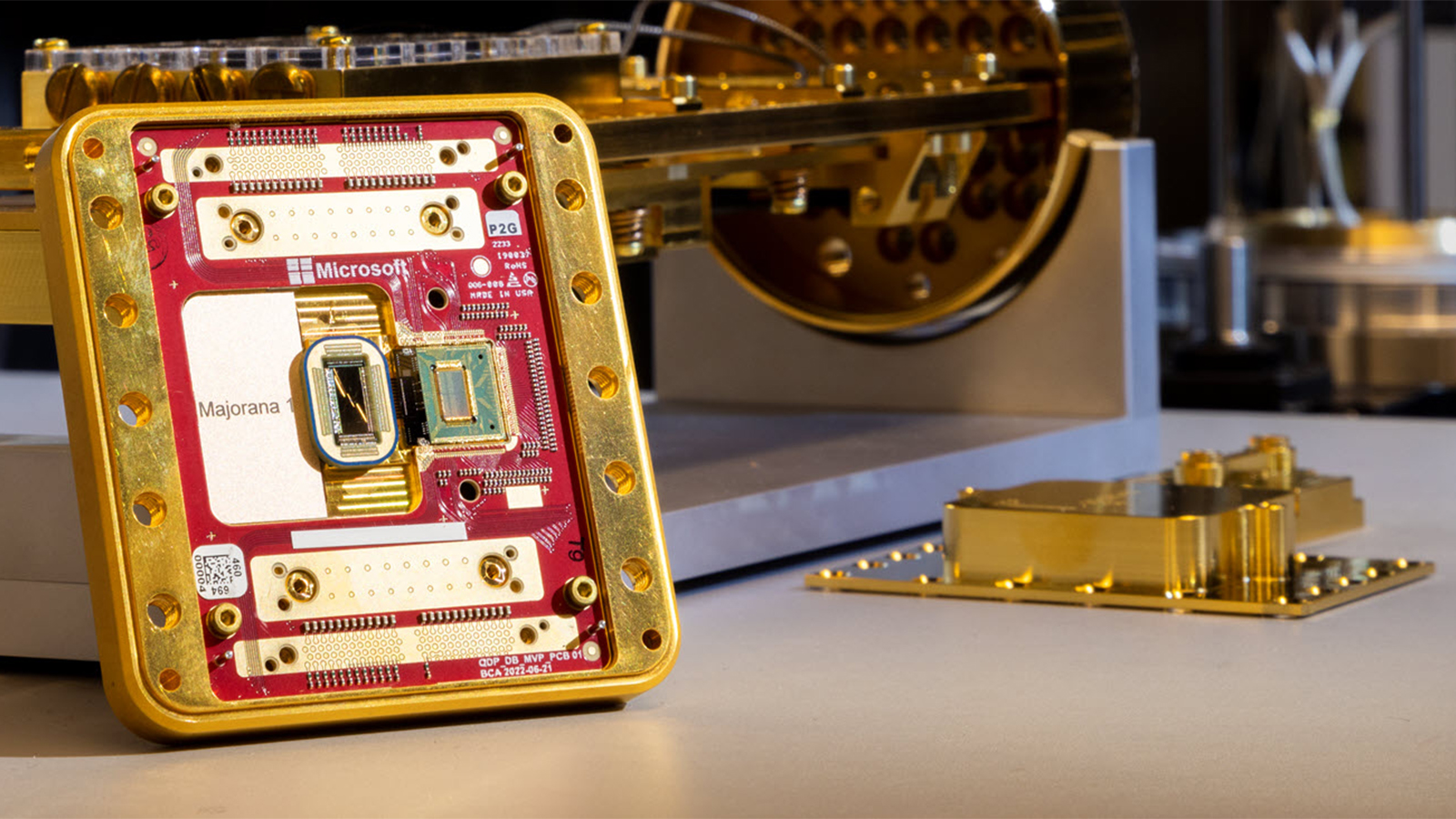Microsoft's latest Quantum computing claims have been named 'unreliable' by scientists
Microsoft got the science wrong, according to one physics and astronomy professor.

Microsoft's recently announced Majorana 1 quantum chip, which it claims uses a Topological Core architecture capable of packing a million qubits into a single quantum processor. However, some scientists are skeptical of the results delivered by Redmond. University of Pittsburgh Professor of Physics and Astronomy Sergey Frolov told The Register, “This is a piece of alleged technology that is based on basic physics that has not been established. So, this is a pretty big problem.”
Many scientists have their reservations about Microsoft's breakthrough, with Frolov even going as far as saying that the Majorana 1 chip is “essentially a fraudulent project.” He said that these concerns have been going on for years, especially as the company has previously retracted a 2018 paper it published about Majorana particles in 2018. Other scientists also expressed concerns because Microsoft's submission was missing some crucial details.
Aside from that, Professor Frolov said that he talked with fellow physicists and researchers whom Microsoft has shared its data with, and he said to The Register, "People were not impressed and there was a lot of criticism." The company is set to present its paper and more recent developments at the American Physical Society (APS) Global Physics Summit on March 15 to 20, but he's still skeptical that this will clear the air on Microsoft's claims.
Frolov said that Microsoft's planned presentation next week won't answer all the questions and concerns raised by experts based on what his contacts told him. He also added that the company's Majorana results are questionable — and without that, then the topological qubit that it claims will not work.
But whatever the case, the company’s presentation in the coming days will certainly reveal more information. And, in the end, if this quantum processor does not work, it will not have any commercial value, putting Microsoft at a disadvantage as it’s essentially throwing away money and resources it could have used to pursue a different path to achieve quantum computing.
In its defense, Microsoft’s researcher Chetan Nayak pointed out that they submitted the paper to Nature in March 2024, and that it was published eleven months later in February 2025. He said that the company has made significant progress since then, which will be presented at the American
Microsoft said that its Majorana 1 quantum chip can “observe and control Majorana particles to produce more reliable and scalable qubits, which are building blocks for quantum computers.” This particle was first theorized in 1937, but there’s still no definitive proof that it even exists. That’s why some scientists find it unbelievable that the tech giant has detected and put them to use in its quantum processor with its eight topological qubits.
Get Tom's Hardware's best news and in-depth reviews, straight to your inbox.
Quantum computing is set to deliver processing power that is light-years away from what classical computing can achieve. However, this technology is also incredibly complex, and over 40 years of research still hasn’t resulted in a commercially viable quantum chip. Aside from Microsoft, several companies like IBM, Quantum Brilliance, QCI, and more are working on the problem, with each one taking a different approach.
Given humanity’s ever-increasing appetite for processing data, quantum computing is expected to have a market value of around $20 to $30 billion by 2030. This is likely to increase, especially as AI demands more and more processing power, with many companies investing billions into larger and more powerful data centers. So, the first company to come up with a commercially viable solution to the quantum computing problem will likely reap billions, if not trillions, of dollars in returns.

Jowi Morales is a tech enthusiast with years of experience working in the industry. He’s been writing with several tech publications since 2021, where he’s been interested in tech hardware and consumer electronics.
-
Pierce2623 While have zero understanding of the tech underpinning quantum computers, I do know that Microsoft doesn’t throw billions of dollars at a project they don’t believe will ever work.Reply -
ttquantia Quantum computers are not for everything. The only really credible application so far is factoring. Factoring is useful for breaking encryptions such as RSA. But not all encryption methods. And that's about it. There is a theoretical speed-up obtainable by Grove's algorithm for NP-complete problems, but it does not make solving NP-complete problems efficient. It only makes solving them less exponential in the theoretical worst case. This includes hard optimization problems arising in lots and lots of fields of computing. However, this is only a theoretical improvement, as none of the solution methods for these types of optimization methods actually typically run as slow as the theoretical worst-case predicts, but much much faster. So much faster, that quantum computing has no chance of getting even close. That's why it is broadly believed by experts that "lots of applications" for quantum computers as they are currently known, is just hype, with far fewer real-world applications than what some people would like us to believe. Who wants to decrypt encrypted messages? Not me. I have no use for that at all. Almost nobody does.Reply -
Alex/AT Another problem is that it is not just any 'processing power' in any form of application.Reply
It's only a power to quickly bruteforce input values for given output over specific combination action, so it's highly specialized & not applicable to classical computing. -
Mr Majestyk Reply
You better tell the researchers using them for weather/climate modelling and materials science then they are doing it wrong.ttquantia said:Quantum computers are not for everything. The only really credible application so far is factoring. Factoring is useful for breaking encryptions such as RSA. But not all encryption methods. And that's about it. There is a theoretical speed-up obtainable by Grove's algorithm for NP-complete problems, but it does not make solving NP-complete problems efficient. It only makes solving them less exponential in the theoretical worst case. This includes hard optimization problems arising in lots and lots of fields of computing. However, this is only a theoretical improvement, as none of the solution methods for these types of optimization methods actually typically run as slow as the theoretical worst-case predicts, but much much faster. So much faster, that quantum computing has no chance of getting even close. That's why it is broadly believed by experts that "lots of applications" for quantum computers as they are currently known, is just hype, with far fewer real-world applications than what some people would like us to believe. Who wants to decrypt encrypted messages? Not me. I have no use for that at all. Almost nobody does. -
Alex/AT Reply
Yes, it has its uses. But for general computing it means no change.Mr Majestyk said:You better tell the researchers using them for weather/climate modelling and materials science then they are doing it wrong. -
ttquantia Reply
Which researchers? Can you cite a research paper that shows that some computational problem in weather/climate or materials was done with quantum computers, and that computation could not have been very easily done with classical computers instead? No such thing exists.Mr Majestyk said:You better tell the researchers using them for weather/climate modelling and materials science then they are doing it wrong.
You are a victim of quantum hype and disinformation. Quantum computers so far have not even done any factoring that had not been earlier easily done with classical computers.
All current stories about applications (including yours) are about possible future applications, not about the reality today or even the next years. There is a very big difference between current actual reality, and possible applications 20 years from now.